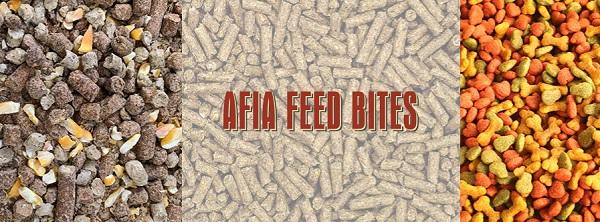The Benefits of Growing Alfalfa Extend Beyond Animal Feed
Published: July 19, 2023
Source : https://www.afia.org/news/afia-blog/the-benefits-of-growing-alfalfa-extend-beyond-animal-feed/

By: Emma Bower, AFIA summer communications intern
Alfalfa is one of the world’s oldest domesticated crops, and today, it is grown on over 20 million acres from coast to coast, making it the nation’s fourth largest acreage crop after corn, soybeans and wheat. The alfalfa plant is not often thought to be used for more than just feeding animals, but it is extremely useful to our environment, with a wide range of benefits, such as rewards to crop rotations, wildlife habitat, soil health and more!
The American Feed Industry Association’s communications team recently had the opportunity to speak with some alfalfa experts about the crop and the unique role it plays in in livestock diets, but also learned about many of its benefits to food production and environmental conservation along the way! Below is what we learned.
What is alfalfa?
Alfalfa is part of the legume family, and it is also a perennial crop. These plants can re-grow up to 11 times a year depending on their geographic location. They generally reach up to 3 feet in height and have a root system that can grow over 15 feet into the ground. Alfalfa can be turned into bales of hay, pellets for feed or just used for grazing animals.
What nutritional value does alfalfa provide to animals?
Along with its high productivity, alfalfa is a major source of nutrients for a wider variety of animals, including nutrients like phosphorus, potassium, iron, copper, sulfur, manganese and other micronutrients. It is considered the premier feed for dairy cows, which means an abundance of our dairy foods, such as milk, cheese, yogurt and even ice cream, can be connected back to the alfalfa plant. Increased weight gain, improved reproduction performance and better bone structure are some of the benefits that may be attributed to alfalfa being included in an animal’s diet. Alfalfa that is baled into hay is also a terrific source of protein and energy for these animals.
How does alfalfa benefit the environment?
This crop is great when used as a cover crop or in crop rotations because it helps retain key nutrients in the soil. For example, a corn crop, after an alfalfa crop rotation, often requires less nitrogen, or none at all, for as much as the first year, with a potential decrease of nitrogen inputs in the second year as well.
Studies have shown that consistent use of alfalfa in cropping rotations improves the soil tremendously by improving moisture retention, drainage and water movement and the availability of nutrients in the soil. This results in more stable soils, resilient to extreme weather patterns.
It also helps decrease erosion and nutrient seeping, by “soaking up” excreted nutrients - because they can reach deeper levels in the soil - that otherwise could potentially run off into nearby water sources. Unintended consequences of decreased alfalfa production in the U.S., would likely be faster soil erosion and decreased yields in other grains.
What’s the deal with alfalfa and water use?
Although alfalfa requires a substantial amount of water – a reminder that it grows all year round, rather than just over a short period of time, comparable because the water applied is similar overall, just spread out over a longer period. It can actually grow and thrive in an environment with inconsistent rainfall or little irrigation. While yes, droughts can limit the production of alfalfa, the crop is very unique in that it can grow back as soon as the moisture returns.
A somewhat unknown bonus is that during periods of drought, alfalfa can provide perennial cover to protect the soil from erosion. For example, during hot summer months, if needed, alfalfa growers can redirect their water resources to other uses, seeing that the plant can still live without water for a period of time. The reason it is grown in the deserts Southwest is this is the perfect area for it. Since there is little rain during the periods it is being cut and baled there is little threat of the crop being damaged.
Given extreme weather variations are becoming more frequent, severe droughts followed by torrential rains, make alfalfa’s ability to grow once moisture returns even more important, as it can provide needed ground cover during torrential rains and begin using that moisture while an annual crop would die out from lack of moisture.
Can alfalfa protect biodiversity?
Yes - a wide range of animals prefer to use alfalfa fields for food and shelter to feed, sleep, nest or hide from predators. Alfalfa is very welcoming to wild animals especially deer and birds, and is an excellent insectary, and provides birds with high quality green leaf material as well as insects.
---
So, there you have it – the skinny on all things alfalfa!
Did you know that the AFIA has a member interest group dedicated specifically to promoting the usage of processed alfalfa products and other forage crops as key feed ingredients and supporting alfalfa research? Learn more or get involved here.
Source
https://www.afia.org/news/afia-blog/the-benefits-of-growing-alfalfa-extend-beyond-animal-feed/Related topics:
Recommend
Comment
Share

Would you like to discuss another topic? Create a new post to engage with experts in the community.



